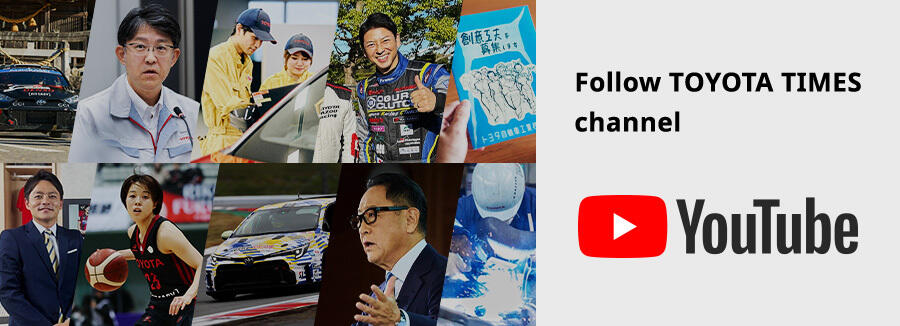
At Toyota's financial results briefing for the year to March 2025, President Koji Sato spoke about the company's progress in strengthening its foundations, and its efforts to change the future of cars. We share his speech in full.
The year’s two key themes for transformation
President Sato
We will leverage this foundation to steadily advance our efforts to change the future of cars.
And we will aim to transform into a mobility company. At the root of this is our desire to contribute to people’s happiness through cars and to provide freedom of mobility to all.
There is no clear definition of a mobility company. What is important is that we continue to act toward materializing our vision.
We have been sowing seeds for the future, including building Toyota Woven City, which is a test course for mobility that will begin Phase 1 occupancy and demonstration trials this fall.
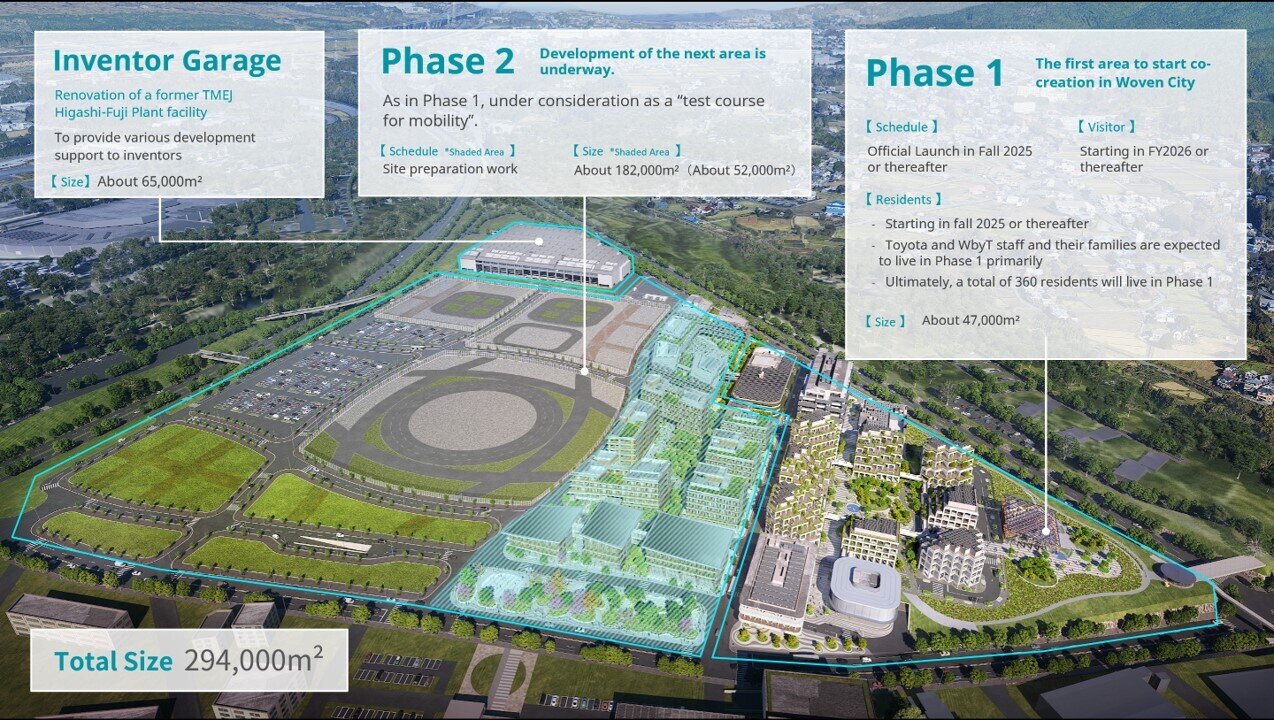
Also, based on our Toyota Mobility Concept, we have been working to materialize our path toward becoming a mobility company.
Our path includes “contributing to achieving carbon neutrality” and “expanding the value of mobility.” With these as our pillars, we have deepened industry-transcending cooperation and made efforts to expand the value of cars by integrating with social systems to create a safe and secure mobility society.

This fiscal year, we will focus on our key themes of enhancing the resolution of our multi-pathway approach and establishing a foundation for Toyota-unique software-defined vehicles.
In Toyota’s multi-pathway approach, our valued desire is to contribute to the achievement of carbon neutrality while leaving no one behind.
In contributing to CO2 reduction through various vehicle types, we will also leverage technologies we hone for next-generation battery electric vehicles to further evolve powertrains overall.
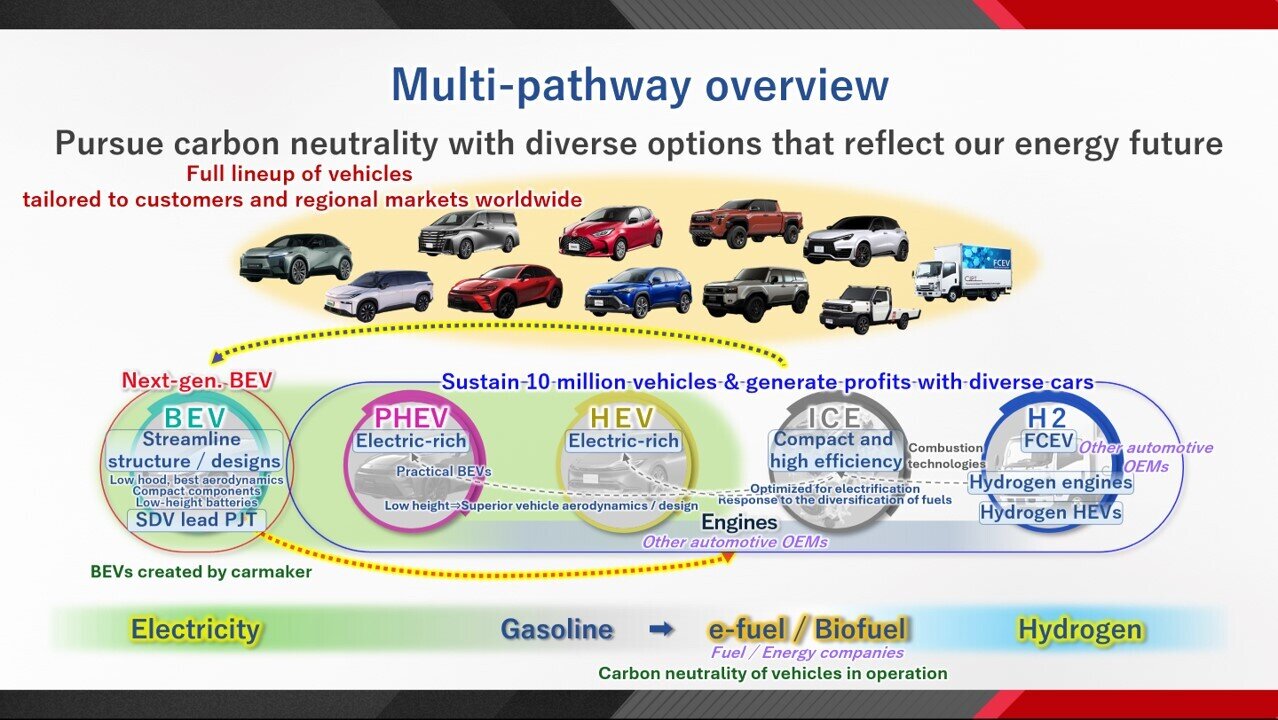
In addition, to make each kind of powertrain a genuine option, we will work with many partners to drive advances in fuel and infrastructure.
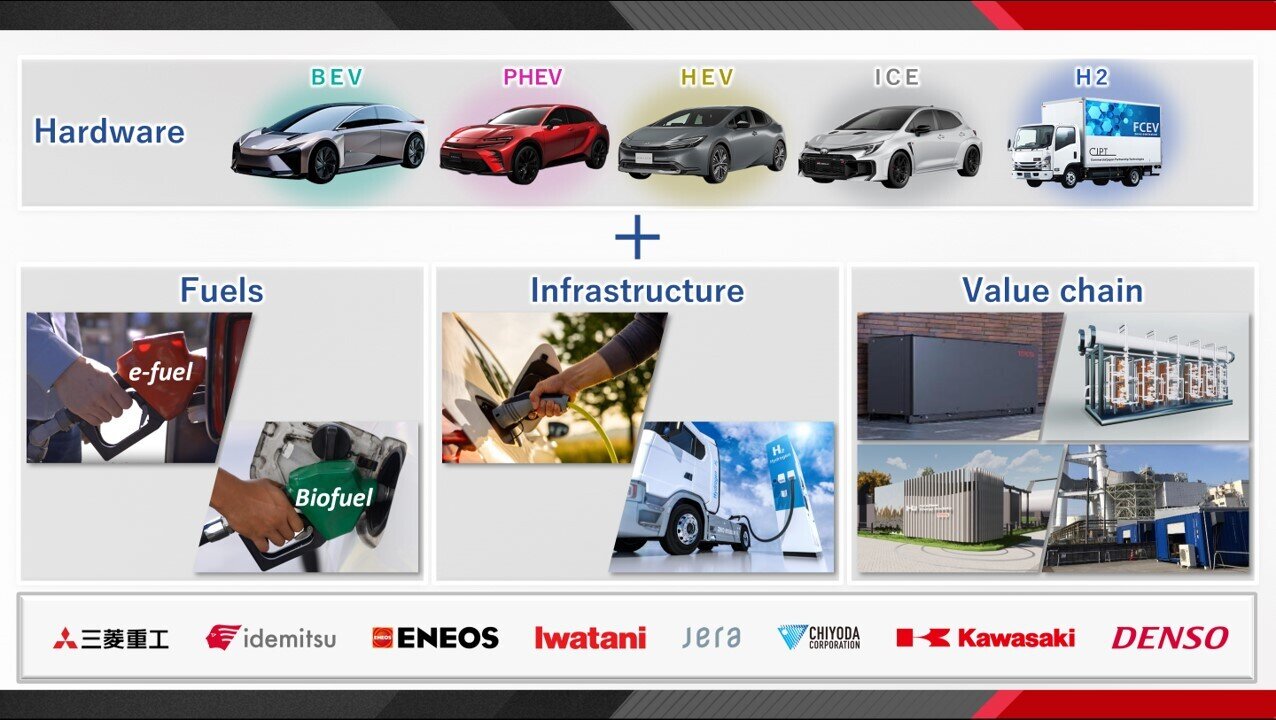
For internal combustion engine vehicles, we are continuing to refine our elemental technologies and strive to achieve the evolution of engines, hybrid systems, and fuels.
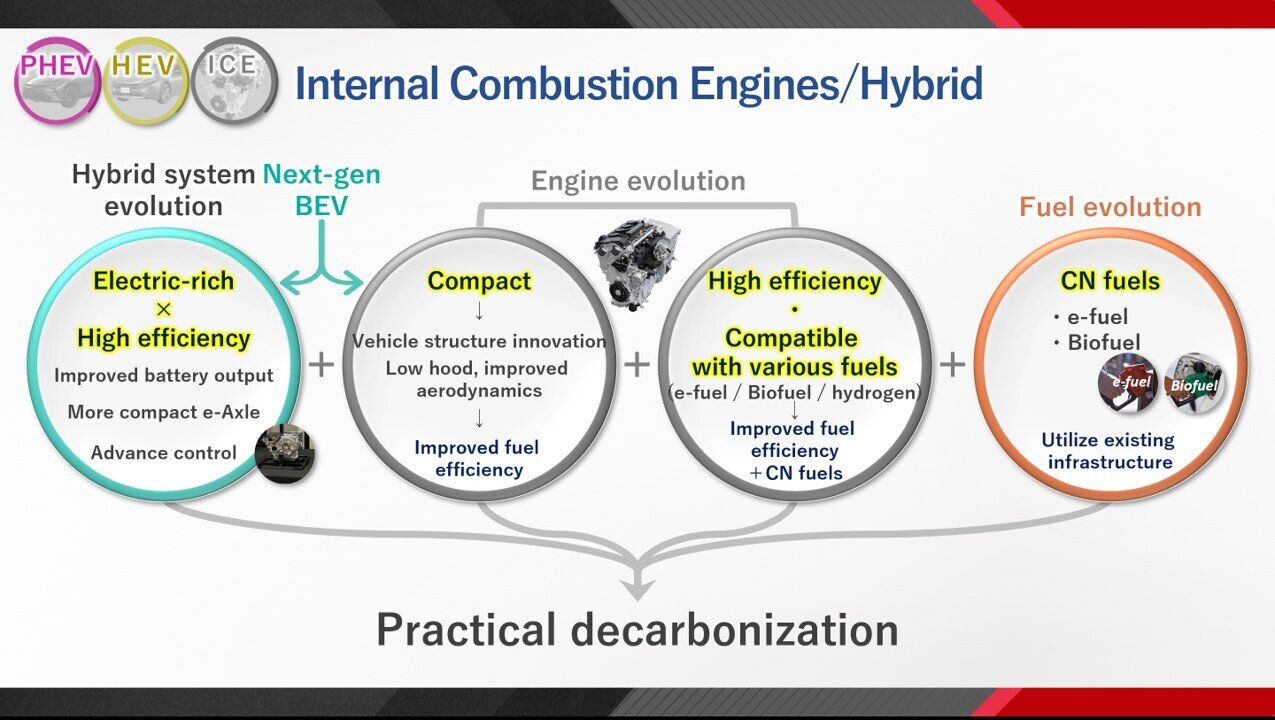
In terms of achieving carbon neutrality when considering the current units of vehicles in operation, it is important to promote the shift to more environmentally friendly mobility, centered on hybrid vehicles, which can immediately reduce CO2 emissions, and to accelerate the spread of carbon-neutral fuels.
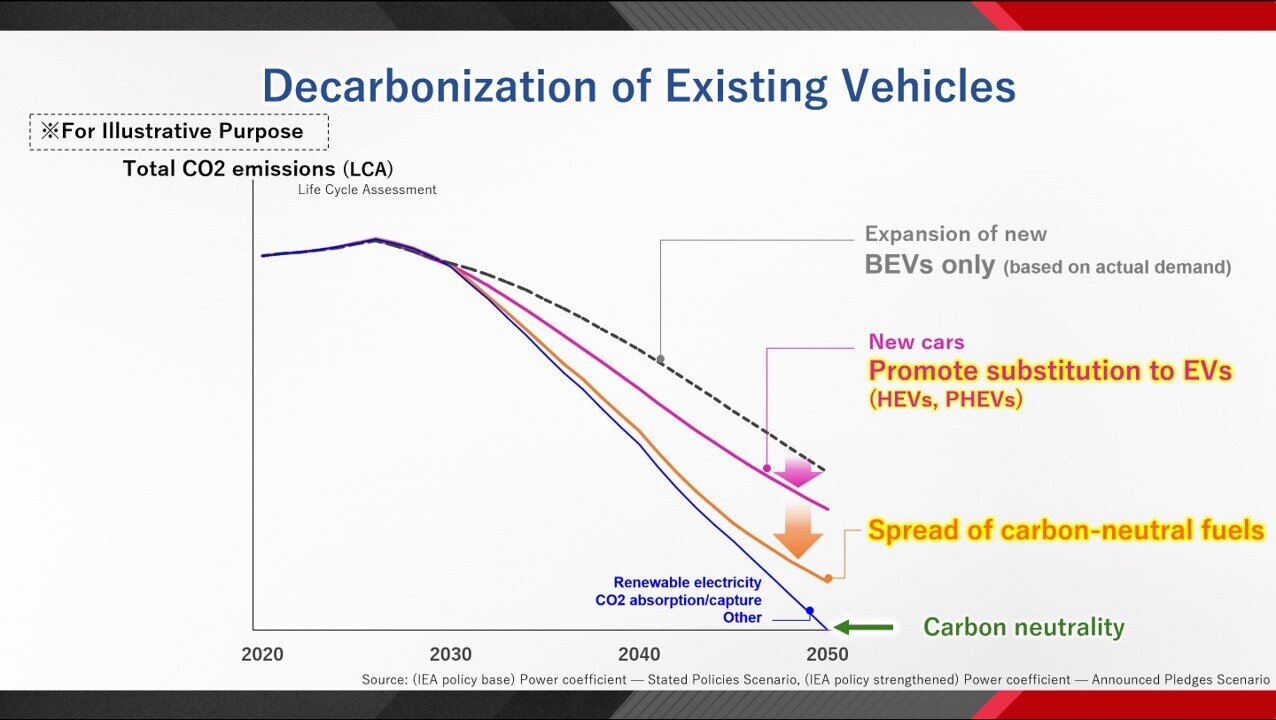
To meet the expectations of our customers around the world, we will continue to provide practical options that contribute to carbon neutrality, including more affordable hybrid vehicles.
In order to popularize battery EVs, in addition to technological innovation in vehicles and batteries, I believe it is necessary to create a battery ecosystem, from battery material procurement to collection and reuse.
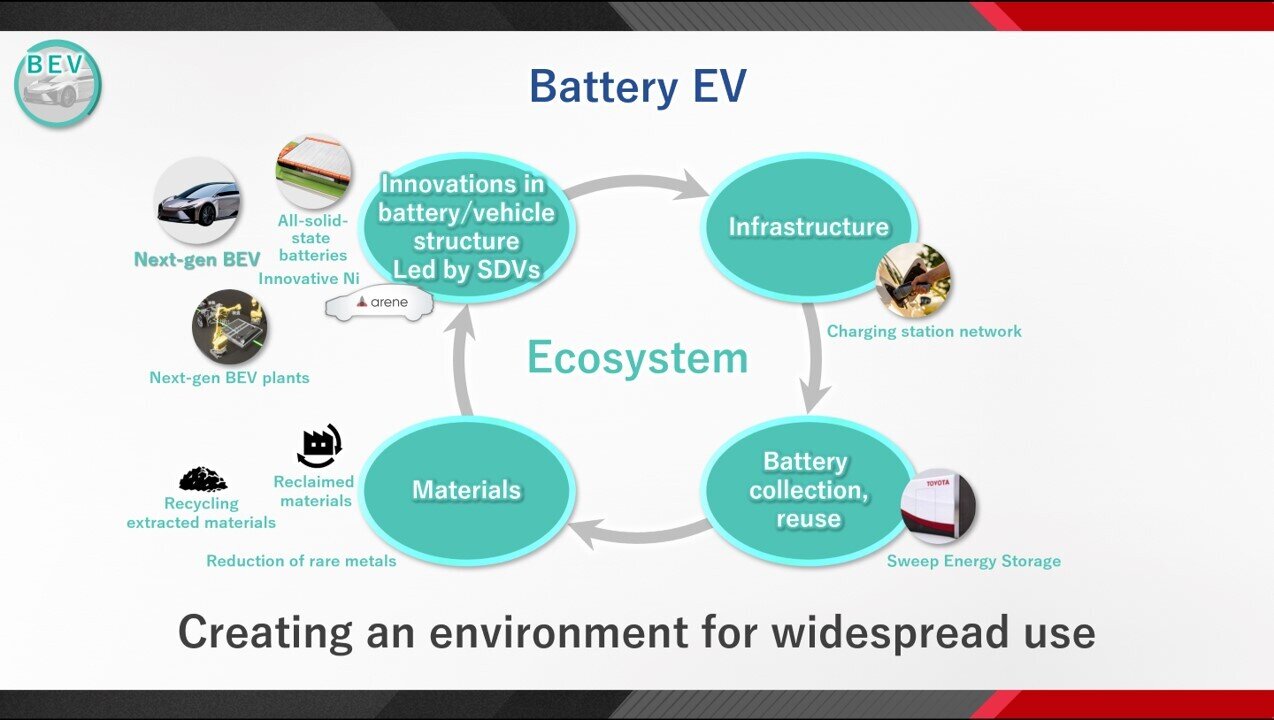
We will create a framework for industry-transcending cooperation and work hard to create an environment for popularization.
When it comes to hydrogen mobility, the key to popularization is reducing the price of hydrogen.
By accelerating the social implementation of hydrogen mobility in commercial vehicles, including through external sales of our hydrogen-fueled power units, we intend to increase hydrogen usage, which will lead to cost reductions and infrastructure expansion.
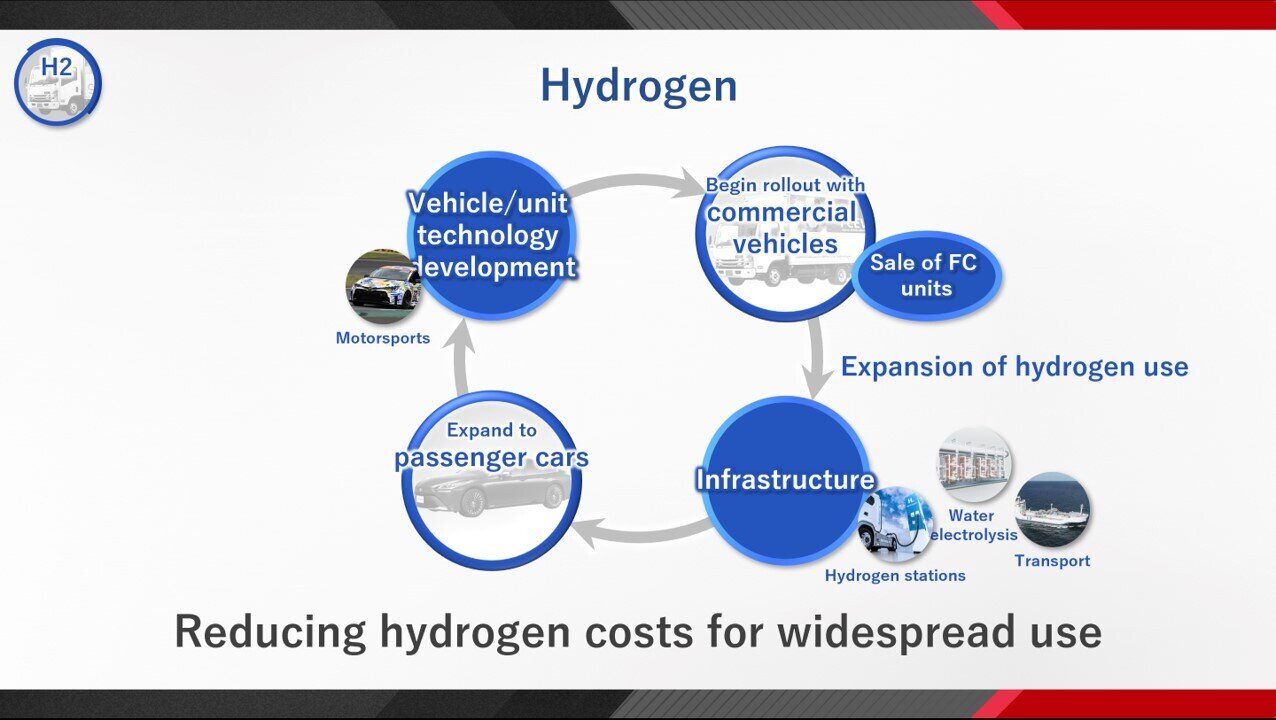
We will continue our efforts throughout the entire value chain, without wavering from our aspirations for the future of hydrogen.
Meanwhile, software-defined vehicles will play a leading role in the transformation from cars to mobility.
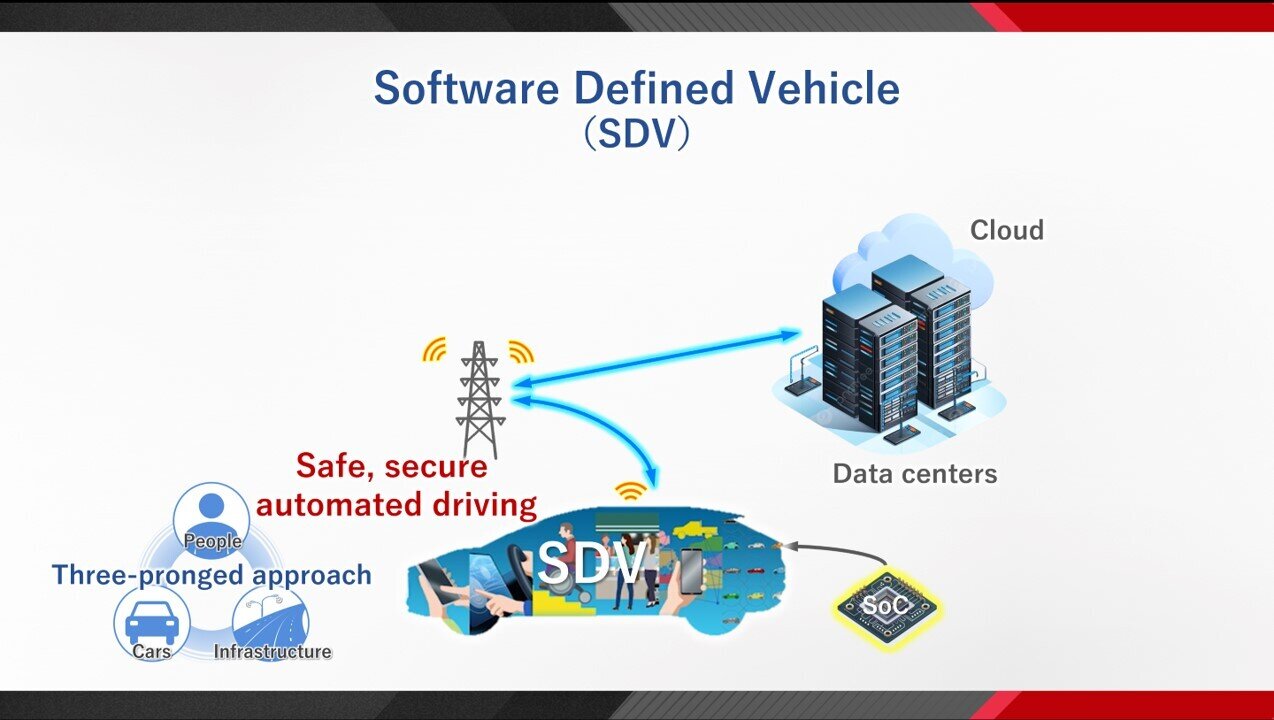
Through software-defined vehicles, we intend to achieve safer, more secure, and more enjoyable mobility. The key to this is to increase the expandability of cars by renewing our electronic platform and employing Toyota’s software platform, Arene.
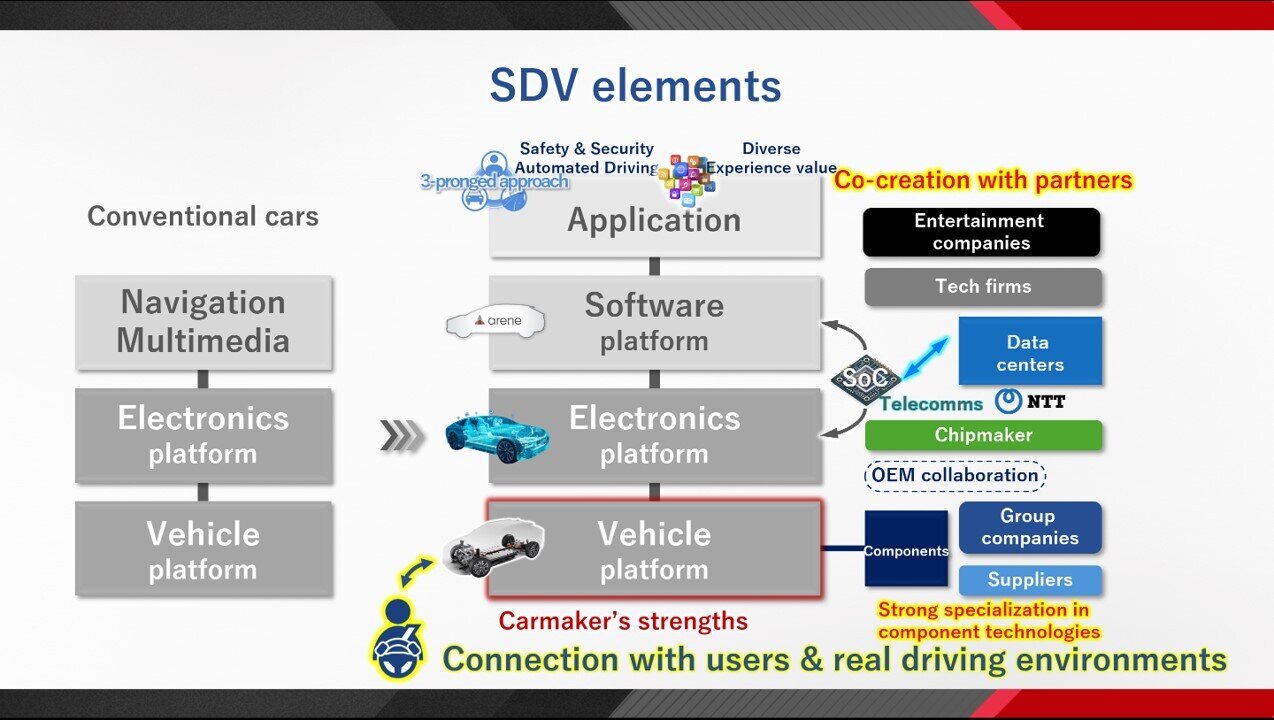
In doing so, chip performance will become more important than ever.
Furthermore, for cars to connect with society, it is important to develop infrastructure, such as in the form of seamless communications environments and data centers.
Last year, together with Nippon Telegraph and Telephone Corporation, we started building that foundation. Based on these foundations, software-defined vehicles will help expand various possibilities of added value.
For example, we intend to materialize the diverse values that data and AI will create, such as data-based vehicle development and service evolution, AI agents that grow together with customers, and services that utilize on-board sensors.
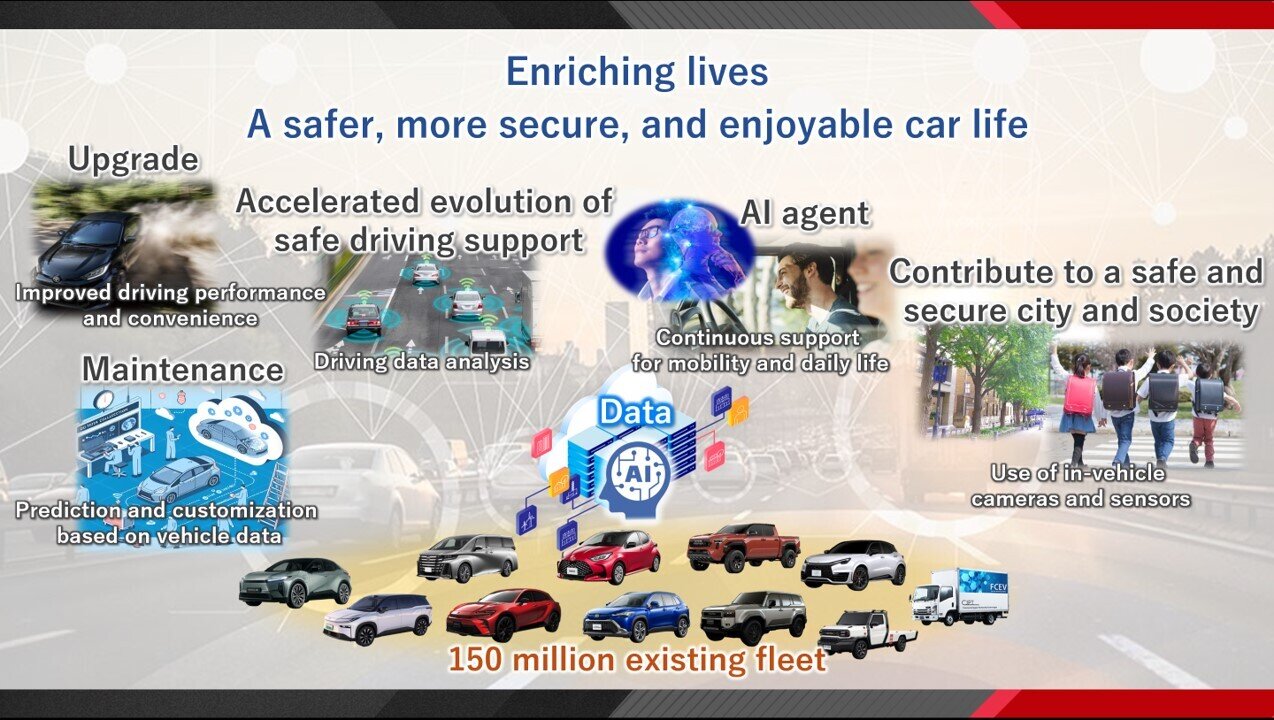
Through co-creation with our partners, we will continue to accelerate the development of a foundation for Toyota-unique software-defined vehicles.
I have now shared with you our key initiatives for this fiscal year.
To transform into a mobility company, we need to envision creating a mobility society and pursue non-sequential evolution, or in other words, innovation.
Together with many partners, we will work toward creating value for cars that are integrated with society and accelerate our efforts to change the future of cars.
We would greatly appreciate your support and understanding.

